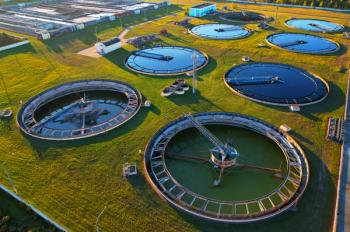
- The Application Notebook-06-01-2011
- Volume 0
- Issue 0
Fast Determination of Anthocyanins to Authenticate Pomegranate Juice
Anthocyanins are a sub-class of naturally electron deficient and powerful antioxidants called flavonoids that are responsible for the red, orange, and blue coloration in fruits and flowers.
Anthocyanins are a sub-class of naturally electron deficient and powerful antioxidants called flavonoids that are responsible for the red, orange, and blue coloration in fruits and flowers. Pomegranate juice (PJ) is a major anthocyanin source and, therefore, very popular in health drinks. But, because of the short supply of pomegranates, adulteration of PJ is widespread. This study describes a sensitive, fast, and accurate method to determine anthocyanins in commercially available PJ with a simple dilution and separation on a Dionex Acclaim® C18 RSLC column followed by detection at 540 nm. The six signature anthocyanins in PJ: delphinidin 3,5-diglucoside (Dp3,5), cyanidin 3,5-diglucoside (Cy3,5), delphinidin 3-glucoside (Dp3), pelargonidin 3,5-diglucoside (Pg3,5), cyanidin 3-glucoside (Cy3), and pelargonidin 3-glucoside (Pg3) are separated in <8 min.
Experimental
A Dionex UltiMate® 3000 Rapid Separation LC System was used for this study. For individual components of the system and preparation of solutions, please refer to Dionex Application Note 264 (1).
Results and Discussion
Figure 1a shows the separation of six signature anthocyanins in 100% PJ. The sample was diluted 1:5 to prevent overloading. Grape juice is one of several juices used to adulterate PJ. Therefore, a 50:50 mixture of grape and 100% PJ were used in this study to simulate an adulterated sample. The chromatogram in Figure 1a shows a separation of six anthocyanins characteristic to PJ ranging in concentrations from 2.1 to 73 μg/mL. The simulated adulterated sample in Figure 1b shows the six signature anthocyanins and several late eluting peaks that are not characteristic of PJ. The figure illustrates how the method could be used to identify adulterated samples. Adulterated juices often show uncharacteristic concentration ratios of signature anthocyanins and additional peaks not present in pure PJ.
Figure 1: Column: Acclaim 120, C18, 2.2 μm, Analytical 2.1 à 150 mm. Eluent: A: 9% CH3CN, 10% Formic Acid, B: 36% CH3CN, 10% Formic Acid. Gradient: 0.0â0.9 min: 100% A, 0.9â8.0 min: 28.5% B, Hold for 2 min at 28.5% B. Temp: 30 °C, Flow-rate: 0.475 mL/min. Detection: Vis 540 nm, Injection Volume: 0.5 μL. Separation of anthocyanins in (a) pomegranate juice sample showing Peak 1: Dp3,5, Peak 2: Cy3,5, Peak 3: Dp3, Peak 4: Pg3,5, Peak 5: Cy3, Peak 6: Pg3 at concentrations of 65.5, 123, 27.5, 8.00, 121, and 4.45 μg/mL, respectively; (b) simulated adulterated PJ showing Peak 1: Dp3,5, Peak 2: Cy3,5, Peak 3: Dp3, Peak 4: Pg3,5, Peak 5: Cy3, Peak 6: Pg3 at concentrations of 33.5, 61.0, 26.0, 5.15, 73.0 and 2.10 μg/mL, respectively.
To evaluate accuracy, the juices were spiked with known amounts of the six anthocyanins. Recoveries ranged from 98.0% to 108.3%, suggesting good method accuracy.
Acclaim and UltiMate are registered trademarks of Dionex Corporation.
References
(1) Dionex Corporation. Fast Analysis of Anthocyanins in Pomegranate Juice; Application Note 264, LPN 2647: Sunnyvale, CA.
Dionex Corporation
1228 Titan Way, P.O. Box 3603, Sunnyvale, CA 94088
tel. (408) 737-0700, fax (408) 730-9403
Website:
Articles in this issue
over 14 years ago
Hydroxyethylstarches (HES)over 14 years ago
Aggregated Singletons for Automated Purification WorkflowNewsletter
Join the global community of analytical scientists who trust LCGC for insights on the latest techniques, trends, and expert solutions in chromatography.





